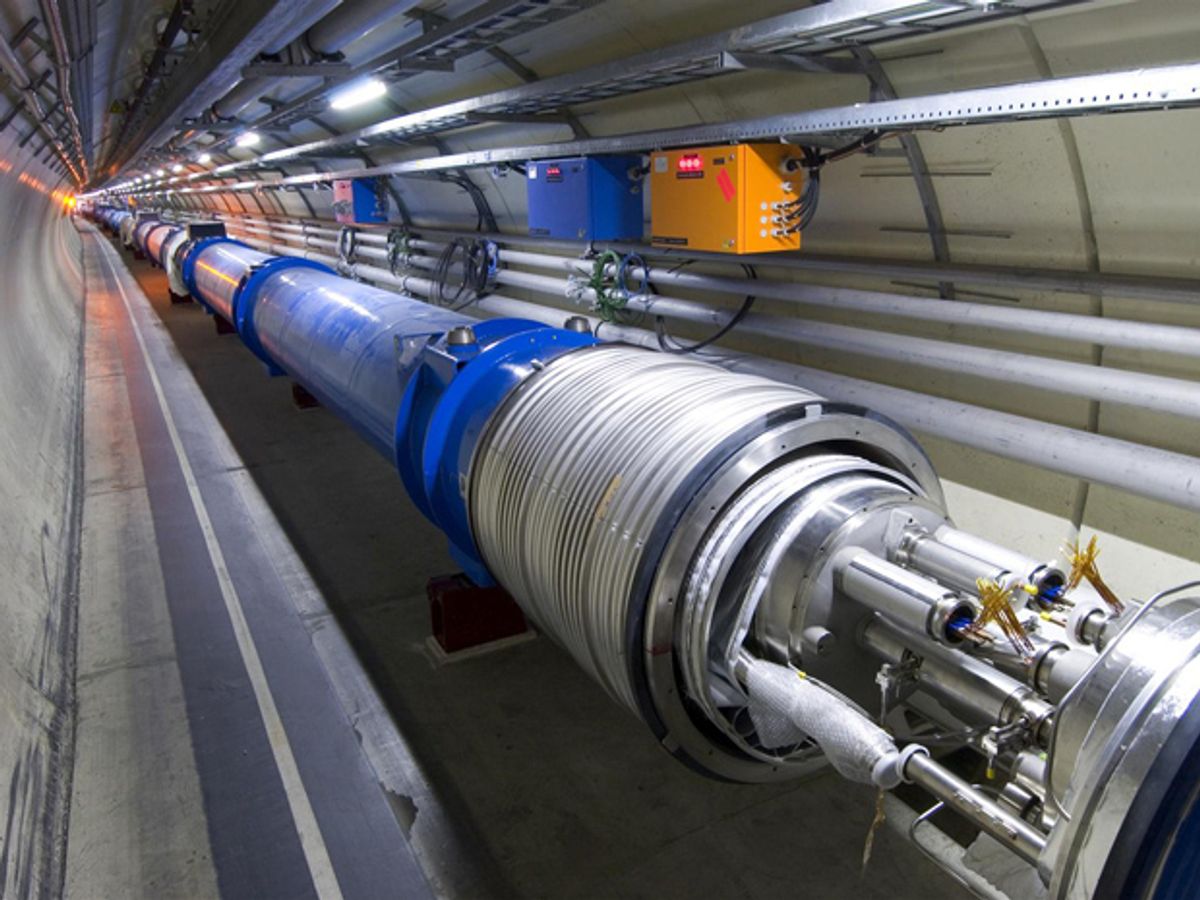After a two-year shutdown, engineers and scientists at CERN have started up the Large Hadron Collider (LHC). Last Friday, a first proton beam with an energy of 6.5 TeV started circulating in the machine, followed by a second proton beam that started circulating in the opposite direction about an hour and half later.
10,000 superconducting interconnects linking the superconducting magnets that steer protons in opposite circular paths have been overhauled so that protons will collide with an energy of 13 teraelectron volts—almost double the energy that allowed CERN scientists to nail the Higgs particle in 2012. The counterrotating protons will start colliding later this summer, possibly as early as 2 June.
With the higher energy, researchers will then be able to pin down the Higgs mass, now determined at 125.09 GeV with a precision of 0.2 percent, to an even more exact value, which will let them tweak the Standard Model of Particle Physics even further. And the higher collision energy will allow researchers to explore still uncharted regions of physics, that of supersymmetry, multiple dimensions, and the nature of dark matter.
While dark matter particles have eluded the particle hunters, some theorists are considering the possibility they might reside in the yet undiscovered world of supersymmetric particles, also referred to as SUSY particles. Other physicists doubt the existence of SUSY particles because they should have been found in the LHC already. The optimists, however, hope that SUSY particles will show up when the LHC's second science run starts later this summer. Strong candidates are SUSY particles called neutralinos, but there are other SUSY possibilities for dark matter as well.
However, if SUSY particles still elude the CERN researchers, there is the possibility that the Higgs particle itself could be responsible for the existence of dark matter, according to scientists at Chalmers University in Sweden. They argue that the Higgs disintegrates into a photon and a dark matter particle. Researchers from both the ATLAS and CMS detectors have now started looking for such events in the data collected during the previous run of the LHC.



